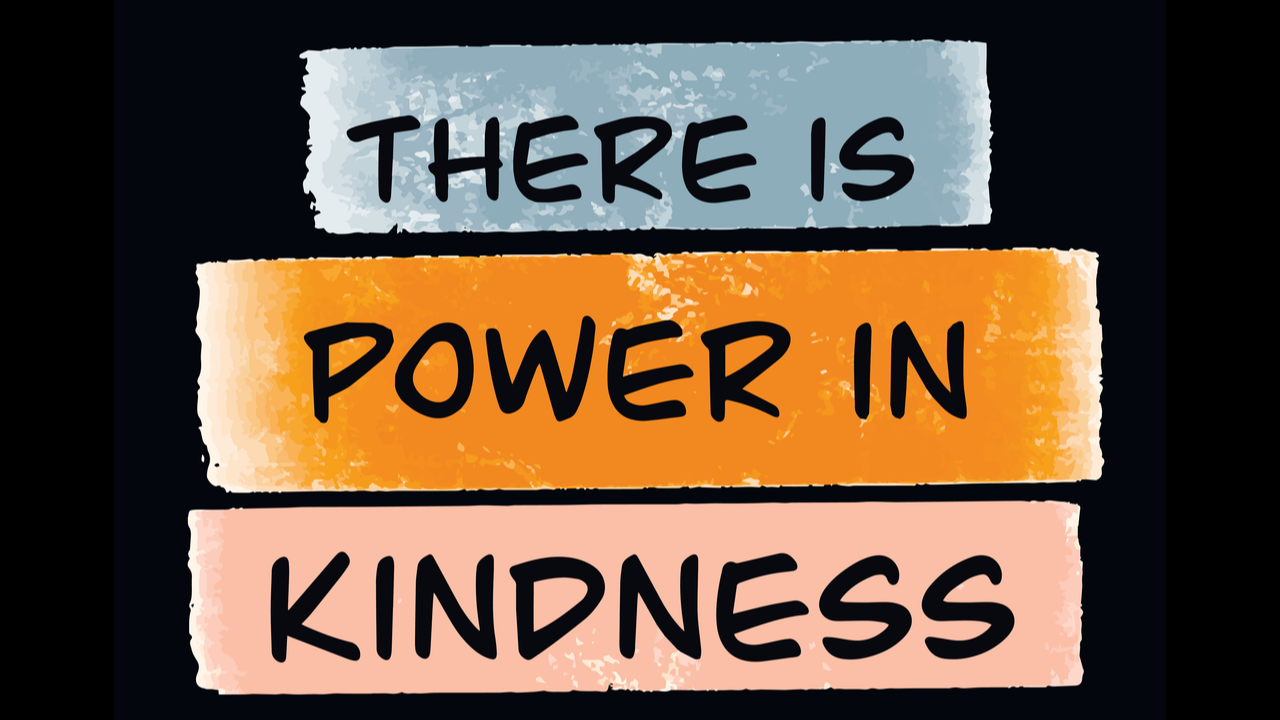Kindness in the Boardroom


Does kindness have a place in the boardroom?
Lately I’ve read a few interesting articles about the value of being kind vs. being nice. It got me thinking about how this distinction applies to a board of directors.
The Savvy Director understands that being effective requires more than just knowledge of the esoteric rules of board governance. It requires understanding people - how they think, behave and interact with each other. In fact, one of The Six Key Habits of The Savvy Director is ‘Collaborate with Others.’ That implies treating other people with respect, compassion and empathy.
So is the Savvy Director kind? Or nice? Maybe both? Or maybe neither?
First of all, let’s explore the difference between being nice and being kind.
Kind vs. Nice
In a nutshell, kindness is about helping others, and niceness is about pleasing others. Sometimes you can be kind to someone even though you aren’t being nice. And you can be nice to someone while being unkind.
The definitions are actually quite different:
- Kind is defined as characterized by mercy and compassion, helpful to other people, a tender, helpful and considerate nature.
- Nice is defined as pleasant or pleasing in nature, exhibiting courtesy and politeness.
People are being nice when they try to please others at all costs and carefully refrain from offending anyone – even when it means being evasive or stretching the truth. The urge to please stems from a desire to be liked and a need to get approval and validation from others.
On the other hand, people are being kind when they have another person’s best interests at heart, which can mean sharing difficult truths that may be hurtful in the short term but helpful in the long run. This urge to help comes from compassion and generosity.
This is not to say that being nice is a bad thing. Being polite and avoiding unnecessarily ruffling feathers keeps things rolling along, but it doesn't go very deep. It doesn’t have to involve your true feelings at all. Kindness actually helps someone, even though it may be delivered quite gruffly.
“Niceness is saying ‘I'm so sorry you're cold,’ while kindness may be ‘Ugh, you've said that five times, here's a sweater!’ Kindness is addressing the need, regardless of tone.” – posted on Twitter by Jordan Green, designer
Marina Davis, in her LinkedIn article Nice vs. Kind, contrasted the two with the following list:
- Nice is self-focused. Kindness is not.
- Nice is easy. Kindness, at times, is not.
- Nice is superficial. Kindness is not.
- Nice doesn’t change much. Kindness does.
- Nice is a pat on the back. Kindness is a look in the eyes.
- Nice does not require courage. Kindness does.
- Nice is forgotten. Kindness is not.
“Kindness … may require listening to something that no one else has the courage to listen to, or sharing information in a tender and considerate way that others may not be willing/able to say. And yes, sometimes kind does not look nice.” – Marina Davis
Kindness is Hard
Kindness actually requires intentionality, courage and skill. That’s because there are times when kindness is called for even though we don’t feel like it, or when we don’t really like the person who needs our help, or when being kind requires us not to be ‘nice’.
“Kindness relies on a lot of skills that we take for granted. I realized that, ultimately, my ability to behave in kindness requires things like empathy, and emotional regulation, and perspective, vulnerability, and all these other related tools.” - Houston Kraft, author of Deep Kindness
“Simply, kindness is focused on deeply helping the other person, even when it is difficult to do. Because of this, offering true kindness to someone can actually require much courage.” – Marina Davis
Kindness and Leadership
None other than Kevin O’Leary, known as Mr. Wonderful on TV’s Shark Tank, has been quoted as saying, “In business, you should be kind, not nice.” And that comes from a shark! (By the way, O’Leary also said, "I don't trust nice people.")
The belief that kindness is characteristic of strong leaders is a distinctly 21st century concept, and it is increasingly taking hold among today’s thought leaders. In part, it is a response to generational changes in the workplace and is linked to concerns about fairness, equity, and social justice. The challenges of the economy have only added fuel to the conversation.
But the same business leaders who find it easy to acknowledge the virtues of kindness towards employees, struggle to see how kindness as a leadership style would be accepted by their board of directors. They fear being ‘too kind’ would be seen as weak leadership and that their board would doubt their ability to take tough action like cutting costs and meeting targets.
In the Boardroom
The view that kindness is incompatible with tough leadership helps to explain why the concept of a kind board seems like an oxymoron.
At first glance, it does appear that kindness would be out of place in the boardroom. Good judgment? Yes. Critical thinking? Sure. Robust questioning? Absolutely. But kindness? Really?
But if kindness implies empathy, respect and fairness, how is that out of place? And if the board expects the CEO and the management team to be kind leaders, what kind of behavior does that imply for board members?
“Kind people can be assertive and set good limits. Nice people, on the other hand, bend over backward to be obliging. They deal with potential conflicts by placating the other person because they can't bear to have anyone upset with them.” – Marcia Sirota, author of How to Stop People-Pleasing
The board plays a key role in defining the organization’s purpose, values, strategy, and culture. The board can build kindness into public statements, make kindness part of the mission and strategy, and incorporate fairness and kindness into policies and practices.
But perhaps most importantly, the board can set the Tone at the Top, lead by example, and promote the desired culture. In other words, they can treat each other and the management team with kindness.
They can start with showing kindness to the CEO and senior management. Directors can demonstrate the attributes of kind leaders by engaging in behaviors that reflect a strong relational style, such as:
- Treating others with respect.
- Being generous in giving as well as receiving.
- Communicating with a personal touch.
- Listening intently.
- Offering support and assistance if needed.
- Valuing the views of others.
- Being on the outlook for signs of distress.
- Expressing real appreciation.
- Giving truthful and constructive feedback.

Directors, Say What You Think
“Always be kind, but kindness doesn't mean that you have to not say what you think.” - Grace VanderWaal, American singer-songwriter
It’s a mistake to think that being kind will prevent directors from doing their job. That job almost always involves providing feedback to management – feedback on performance, organizational results, reports, plans, proposals, etc.
Rajshree Agarwal, in her Forbes article When Being Nice Is Not Kind, provided guidelines for giving kind feedback. I’ve adapted them to apply to a boardroom situation where directors are giving feedback to management. By the way, the same guidelines would apply to a situation where a board member is providing feedback to another director.
- Be clear. Trying to be nice by ‘softening the blow’ can do damage because the lack of honest feedback leaves management guessing. They might not hear anything negative, but then the board’s subsequent actions signal that there’s a problem.
- Focus on benefits. Honest feedback does not require emphasizing the negative over the positive. In fact, tough feedback can be uplifting when it focuses on the benefits of change.
- Guide rather than decree. Kind feedback promotes management’s autonomy and authority. It encourages them to problem-solve rather than dictating the board’s solution.
- Change perspective. Kind feedback requires the ability to see problems from management’s perspective as well as the board’s – not to mention an external perspective.
- Match communication style. Kind feedback may require switching communication style or method to meet individual preferences. For instance, how would management prefer to receive the feedback – in an open board meeting or one-on-one? Understanding the answer starts with empathetic listening.
“You seek feedback and your nice boss tells you, ‘You’re doing great!’ Your nice friends tell you, ‘You’re wonderful just as you are!’ And that’s when you begin to realize that perhaps you need someone who will tell you about the spinach in your teeth, or the toilet paper on your shoe, or that you spit when you talk. ‘Nice’ is not helping you right now. … You need someone who is willing to be kind.” – Marina Davis
Be Kind to Yourself
If you’re a regular reader of The Savvy Director blog, I’m going to assume that you are focused on trying to be the best board director that you can be.
At times you’re going to fall short of your own expectations. Maybe you’re weren’t as kind as you would have liked. Maybe your feedback to management didn’t meet the guidelines.
Whatever your so-called failure, I want to say this: ‘Don’t beat yourself up. Be kind to yourself.’
That’s why the Resources section below includes a couple of links to articles on the topic of self-compassion. I hope you will click on them if you have a temptation to be hard on yourself.
Your takeaways:
- Being nice is about pleasing others. Being kind is about helping others.
- Kindness is not easy, nor does it imply weakness.
- Today’s leaders appreciate the value of leading with kindness.
- Board directors can model kindness in their interactions with the CEO and the management team.
- Your director role involves giving feedback to management and other board members. You can do so with kindness.
- Be kind to yourself.
Resources:
- Want to Be a Great Leader? Stop Being Nice and Start Being Kind. Jessica Stillman. Inc. January 2021.
- Be Kinder to Yourself. Alice Boyes. Harvard Business Review. January 2021.
- Are You Nice or Are You Kind? There’s a Big Difference. Lizzy Francis. Fatherly. September 2020.
- How to be kinder to yourself. Susan David. TED Ideas. February 2020.
- The Difference Between Being Nice and Being Kind. Marcia Sirota. HuffPost Canada. November 2016.
- Nice vs. Kind. Marina Davis. LinkedIn. January 2015.
Leave a comment below to get in on the conversation.
Thank you.
Scott
Scott Baldwin is a certified corporate director (ICD.D) and co-founder of DirectorPrep.com – an membership with practical tools for board directors who choose a learning and growth mindset.
Originally published: June 20, 2021
We Value Your Feedback: Share your suggestions for future Savvy Director topics.
Comment



